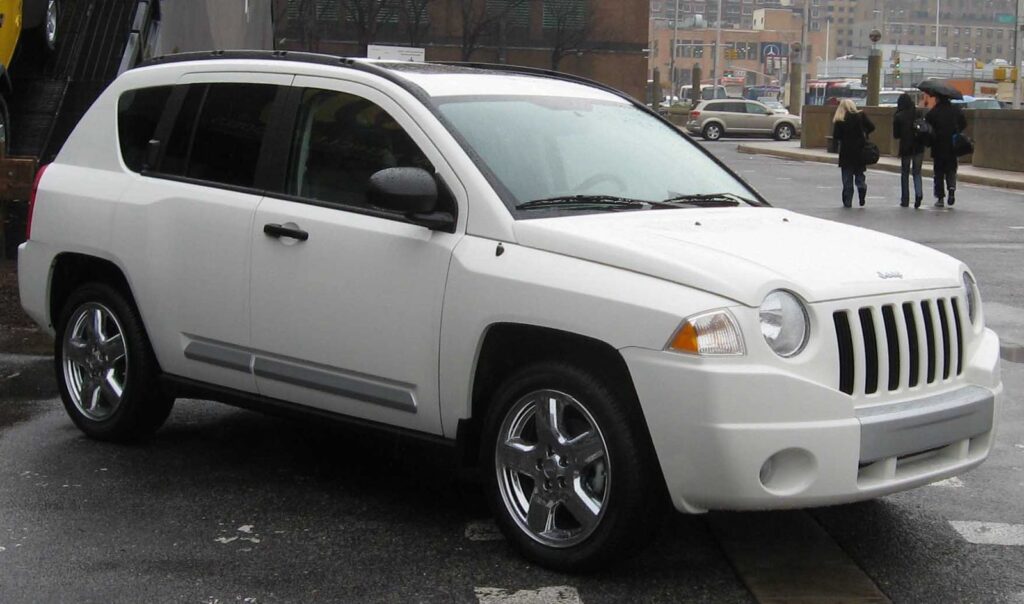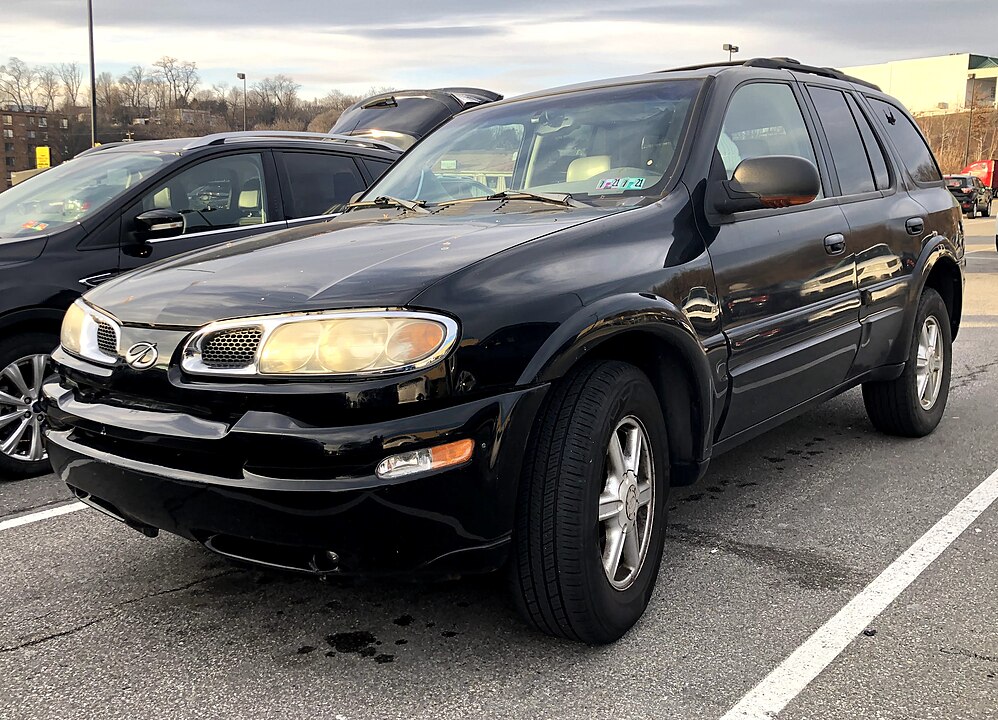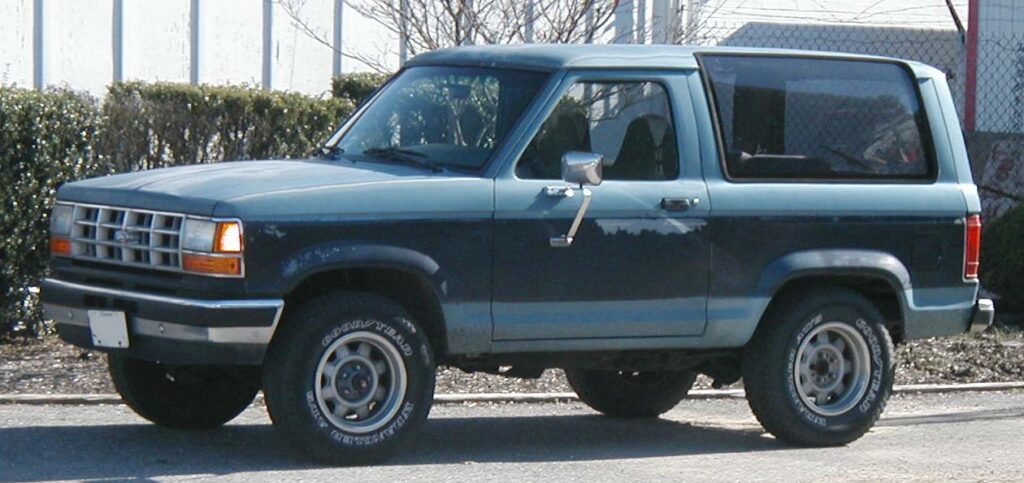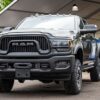Sometimes, even the biggest car manufacturers miss the mark when launching new vehicles. While SUVs continue to be one of the most popular types of vehicles, not every model has been a hit. From design flaws to poor timing, several SUV launches have failed to meet expectations. Here’s a look at 19 disastrous SUV launches that didn’t quite go as planned.
Contents
Pontiac Aztek (2001)

Despite its innovative features like a built-in tent and cooler, the Pontiac Aztek’s odd design was a major turn-off for many. Its awkward and polarizing appearance led to slow sales, and the SUV was discontinued after just four years. While the Aztek tried to carve out a niche, it simply didn’t resonate with consumers. The model’s failure played a key role in Pontiac’s eventual demise. Even with a slight popularity boost from Breaking Bad, the Aztek remains an infamous example of poor SUV design.
Ford Explorer Sport Trac (2000)

The Explorer Sport Trac aimed to blend an SUV with a pickup truck, but the results were lackluster. With limited cargo space and a subpar ride quality, it failed to win over either SUV or truck buyers. Its design felt outdated not long after launch, leaving consumers unimpressed. Although it was a bold concept, the Sport Trac couldn’t sustain long-term interest. Ford finally discontinued it in 2010 after struggling to meet sales expectations.
Lincoln Blackwood (2002)

Marketed as a luxury SUV-truck hybrid, the Lincoln Blackwood missed the mark due to its impracticality. A small, carpet-lined truck bed limited its real-world utility, while its high price tag pushed away potential buyers. The model was pulled from the market after just one year, making it one of Lincoln’s shortest-lived vehicles. Even though it boasted luxury features, the Blackwood simply didn’t offer enough value.
Suzuki X-90 (1995)

The Suzuki X-90’s quirky two-seat design and T-top roof confused buyers rather than attracting them. Too small to compete with other SUVs but too odd for the compact market, it lacked a clear identity. Despite having decent off-road capabilities, its impractical layout and cramped space left little appeal. After two years of disappointing sales, Suzuki discontinued the model in 1997.
Chevrolet SSR (2003)

Chevrolet’s SSR was an unusual blend of retro styling and SUV practicality, but it failed to deliver on both fronts. While its retractable hardtop and pickup bed were unique features, the vehicle’s heavy weight and underwhelming performance hurt its appeal. SSR’s awkward combination of truck and SUV led to poor handling and disappointing sales. By 2006, Chevrolet pulled the plug on the model.
Isuzu VehiCROSS (1997)

The Isuzu VehiCROSS was praised for its off-road abilities, but its futuristic, almost bizarre look alienated potential buyers. Its two-door design and cramped interior made it impractical for everyday use. Although its suspension and four-wheel-drive system were top-notch, the high price tag and limited production didn’t help its sales. The VehiCROSS was discontinued by 2001, largely overlooked by the mainstream market. Still, it has since gained a small cult following among off-road enthusiasts.
Nissan Murano CrossCabriolet (2011)

Nissan’s Murano CrossCabriolet attempted to create a unique SUV-convertible hybrid, but the results were puzzling. The bulky design made the convertible top feel out of place, while poor handling further dampened its appeal. Priced too high for such a niche market, the vehicle failed to attract enough buyers. By 2014, Nissan discontinued the model without much fanfare. Its unusual concept never gained the traction needed for long-term success.
Hummer H2 (2002)

Initially, the Hummer H2 was celebrated for its rugged, military-inspired design, but its massive size and abysmal fuel economy soon became liabilities. As gas prices rose and environmental awareness increased, the H2 became a symbol of excess. Despite its off-road prowess, it was impractical for most consumers, especially in urban areas. Sales plummeted, and Hummer discontinued the model in 2009.
Dodge Nitro (2007)

The Dodge Nitro aimed for bold, aggressive styling but failed to back it up with performance or practicality. Its poor fuel economy and low-quality interior materials left buyers unimpressed. Additionally, the driving experience fell short of expectations, with many reviewers citing lackluster handling. As a result, sales were sluggish, and Dodge ended production in 2012. The Nitro’s failure underscored the importance of balancing style with substance in the SUV market.
Cadillac SRX (2004)

Cadillac’s first-generation SRX entered the luxury SUV market but struggled to make an impression. Its design was too conservative to stand out among flashier competitors. Buyers were also disappointed by its cramped third-row seating and poor fuel efficiency. After slow sales and tepid reviews, Cadillac redesigned the SRX in later years.
Volkswagen Routan (2009)

Volkswagen’s Routan was essentially a rebadged Chrysler Town & Country, which did little to excite VW enthusiasts. Lacking Volkswagen’s signature engineering and flair, it felt like a half-hearted attempt at entering the minivan market. Critics pointed out that the Routan offered nothing unique compared to the original Chrysler model. By 2013, VW quietly discontinued the Routan, making it one of the brand’s less memorable ventures. It serves as a cautionary tale in badge engineering.
Jeep Compass (2007)

When the first-generation Jeep Compass launched, it struggled to meet the brand’s reputation for ruggedness. Its weak engine and subpar off-road capabilities disappointed both fans and critics alike. Interior materials felt cheap, and the overall build quality lacked the durability expected from a Jeep. These issues led to poor sales, with many buyers opting for more capable alternatives. Jeep eventually redesigned the Compass, but the original version is often cited as a low point for the brand.
Acura ZDX (2010)

The Acura ZDX, with its coupe-like SUV design, failed to capture the interest of luxury buyers. Its sloping roofline compromised both rear headroom and cargo space, limiting its practicality. Furthermore, the ZDX’s high price tag didn’t justify the lack of unique features compared to other models in Acura’s lineup. After dismal sales, Acura pulled the ZDX from the market in 2013. The vehicle remains an example of bold design choices overshadowed by real-world limitations.
Hyundai Veracruz (2007)

Hyundai aimed high with the Veracruz, attempting to compete in the luxury SUV segment, but it didn’t quite hit the target. While the Veracruz was affordable and decently equipped, it lacked the brand prestige necessary to compete with luxury giants. The design was seen as uninspired, leaving buyers unimpressed. Despite generally positive reviews, sales were underwhelming, and Hyundai replaced the Veracruz with the more successful Santa Fe in 2012. It remains a footnote in Hyundai’s SUV evolution.
Kia Borrego (2008)

Released during a period of skyrocketing gas prices, the Kia Borrego entered the market at the worst possible time. Its large size and poor fuel efficiency made it unappealing for cost-conscious buyers. Despite having decent off-road capabilities, the Borrego couldn’t find a strong foothold. Kia discontinued the model after just one year, marking it as one of the brand’s shortest-lived SUVs. Poor timing and market conditions sealed its fate.
Mitsubishi Endeavor (2003)

Mitsubishi launched the Endeavor with hopes of gaining ground in the crowded mid-size SUV segment, but it failed to stand out. It offered no third-row seating, which was a major drawback for families, and its fuel efficiency was below average. Over the years, Mitsubishi made few updates, leaving it to languish in the market. The Endeavor was finally discontinued in 2011 after failing to capture significant consumer interest. It’s now largely forgotten, even among Mitsubishi fans.
Oldsmobile Bravada (2002)

As Oldsmobile’s last attempt at making an SUV, the Bravada entered the market just as the brand was winding down. It was underpowered and failed to offer anything special compared to its rivals. The Bravada didn’t have a long shelf life and was discontinued along with the rest of the Oldsmobile line in 2004.
Chevrolet TrailBlazer EXT (2002)

The extended version of the Chevrolet TrailBlazer, the EXT, was supposed to offer more space, but its added length created more problems than benefits. Poor handling and worse fuel efficiency compared to the standard model hurt its appeal. Additionally, the EXT’s longer size made it difficult to drive in urban environments. By 2006, Chevrolet decided to discontinue this version due to lackluster sales. It’s now remembered as an unnecessary addition to the TrailBlazer family.
Ford Bronco II (1984)

The Ford Bronco II quickly earned a bad reputation due to its alarming tendency to roll over, thanks to a high center of gravity. Though it was a smaller, more affordable alternative to the full-sized Bronco, its safety issues overshadowed any potential appeal. Lawsuits and consumer complaints followed, leading to a rapid decline in sales. Ford discontinued the Bronco II in 1990 after several years of bad press. It’s now a reminder of how crucial safety can be to an SUV’s success.
This article originally appeared in MyCarMakesNoise.
More from MyCarMakesNoise
20 Iconic Car Redesigns That Set a New Standard in the Industry

Car redesigns can transform ordinary vehicles into extraordinary machines. In this list, we explore 20 stunning car redesigns that changed everything, turning lackluster models into iconic rides. Read More.
18 Red Flags to Watch for Before Buying a Used Car

Buying a used car can be a great way to save money, but it also comes with its risks. To help you avoid making a costly mistake, we’ve compiled a list of 18 must-know red flags to watch out for. Read More.
20 Cars That Will Turn You into a Drifting Pro

Drifting is an art form that requires skill, precision, and the right car. Whether you’re a seasoned drifter or just starting out, having the right vehicle can make all the difference. Read More.














